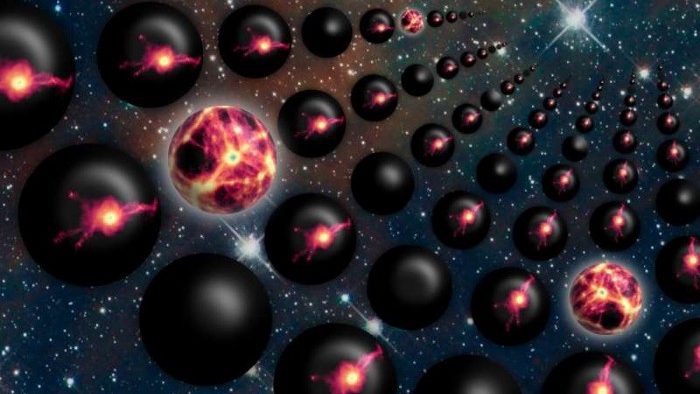Why cutting-edge braneworld theories say our universe began in a white hole

Of all the theories in cosmology about how our universe was created, the braneworld theory presents perhaps one of the most exotic, hard-to-prove and yet potentially elegant solutions to how all this came to be.
The main idea here is that our three-dimensional universe is located on a brane (short for “membrane), which is a multi-dimensional object from string-theory. This brane of ours, say the scientists, is inside a hyper-dimensional space called the “bulk” or “hyperspace”. Interaction with extra dimensions and other moving branes can have an impact on our brane, with effects other cosmological models don’t account for.
In 1999, physicists Lisa Randall and Raman Sundry introduced a braneworld theory that received considerable attention. Under their theory, there can be other universes just a microscopic distance away from ours. But this distance “is measured in some fourth spatial dimension of which we are not aware,” explains Lisa Randall in her blog post explaining the ideas. Essentially, the visible universe is embedded in a larger universe.
“Because we are imprisoned in our three dimensions we can’t directly detect these other universes,” continues Randall. “It’s rather like a whole lot of bugs crawling around on a big, two-dimensional sheet of paper, who would be unaware of another set of bugs that might be crawling around on another sheet of paper that could be only a short distance away in the third dimension.”
A 2013 paper by physicists Razieh Pourhasan, Niayesh Afshordi, and Robert B. Mann, called “Out of the White Hole: A Holographic Origin for the Big Bang,” proposed that our universe is like a hologram, which exists on a 3D brane that was formed as a result of the collapse of a 4D black hole in the bulk universe. The process would be similar to how stars in our universe explode in supernovas, while their inner layers collapse and form black holes. Only in this case, a universe-creating “white hole” is generated. A whole hole is a hypothetical region of spacetime that you can’t enter from the outside, but matter and light can escape it.
If you notice, this model doesn’t require there being being a Big Bang to start off the universe’s expansion.
“Astronomers measured that expansion and extrapolated back that the Universe must have begun with a Big Bang — but that is just a mirage,” said Afshordi, who led the study.
A similarly fascinating way of looking at white holes comes from physicist Nikodem Poplawski, who in 2010, while at Indiana University, proposed that when a dying star produces a black hole upon its collapse, at that same time a universe is born from a white hole on the other side of a wormhole.
This approach regards black holes and white holes as mouths of a wormhole also known as an Einstein-Rosen bridge.
In his paper, Poplawski showed through equations of the spiraling motion of matter falling into a black hole that wormholes were viable as an alternative explanation to the formation of “space-time singularities” (infinitely small points of infinite density), also predicted by Albert Einstein.
What does this mean for our own universe? It could have ”itself formed from inside a black hole existing inside another universe,” explained Poplawski.
Check out this great explanation of the braneworld theory from the Caltech physicist Kip Thorne:





